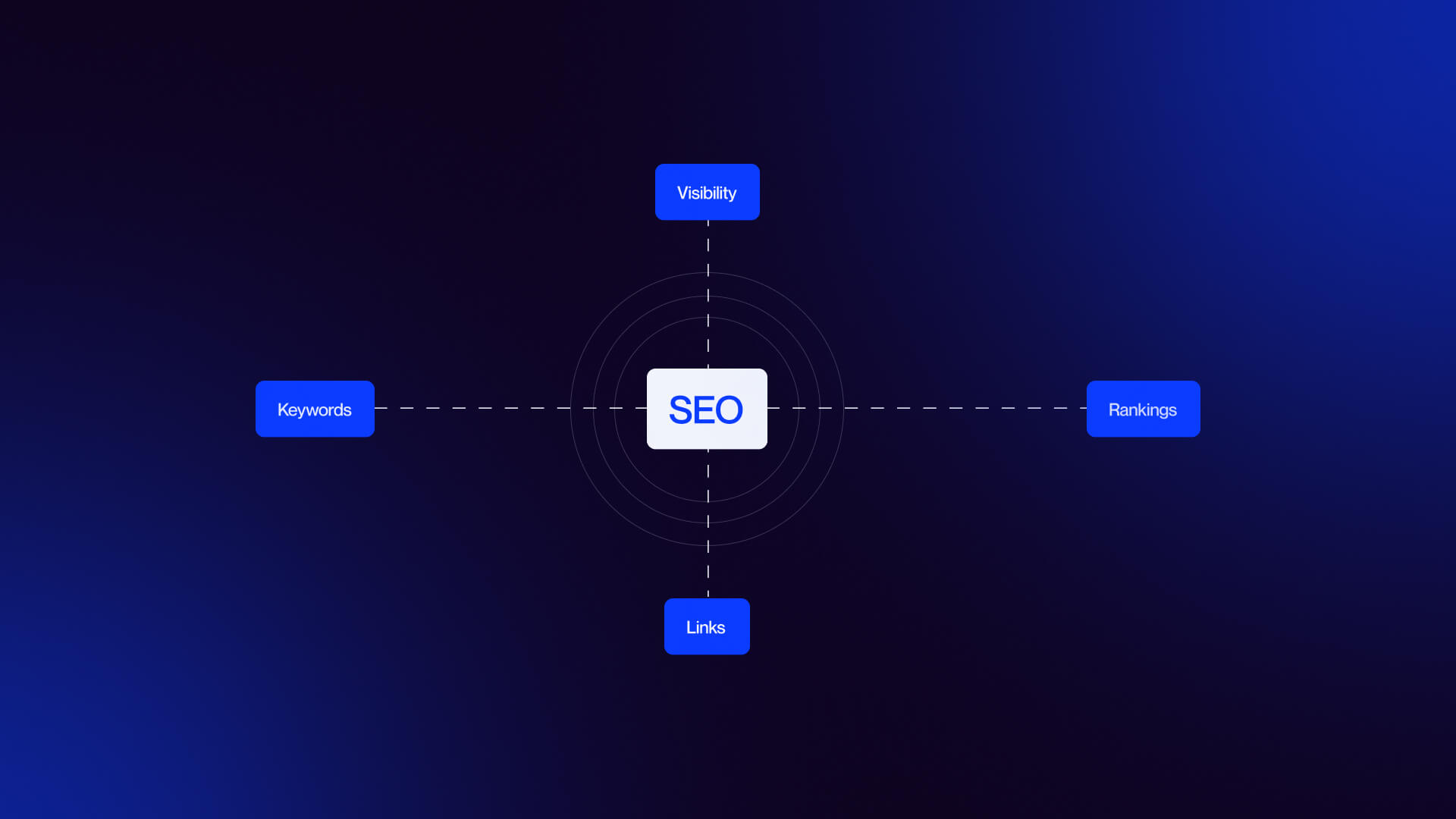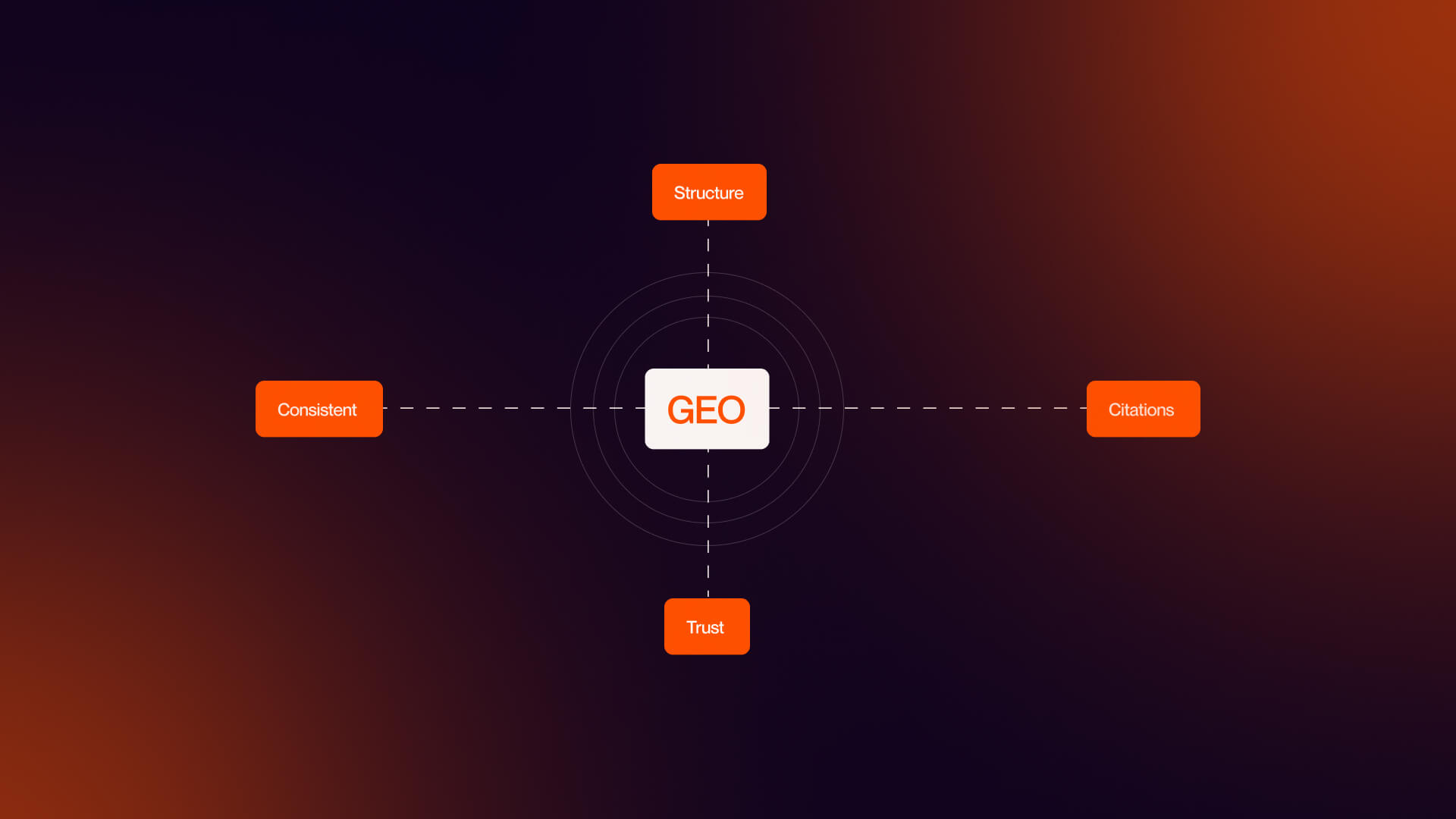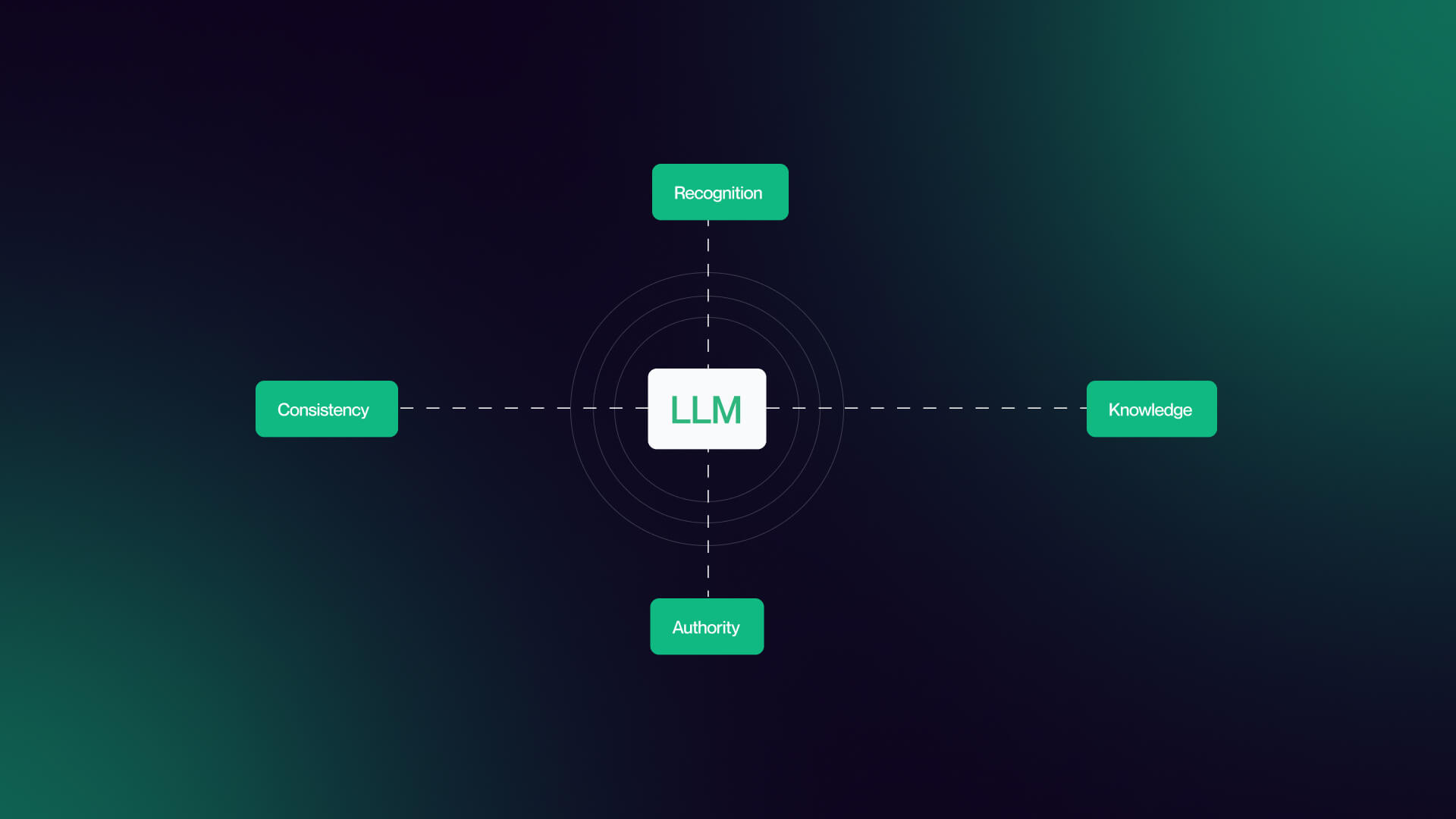Over the past few months, the vocabulary of the search industry has been expanded, and some say it has been totally rewritten. While we still generate content, build authority, and compete for visibility, we start hearing about GEO, AEO, and the industry-shaking impact of LLMs. So this sudden rush of acronyms has created a wave of confusion, leading many to ask whether we should entirely drop traditional SEO.
The reality is that we need to change the way we approach SEO. What we once did to earn a ranking has now expanded to:
- AEO (answer engine optimization): Be chosen for zero-click cancer in search snippets
- GEO (generative engine optimization): Get content cited, read, and used by AI models.
Now the challenge is not to choose between these four but to juggle and integrate them to find the perfect combination for your visibility.
In this article, we will explore how to integrate AEO and GEO, what’s happening to traditional SEO, and what role do underlying LLMs play in this new digital reality? We will break down this new hierarchy of search, showing how to transform your strategy for sustainable future success.
What Changed, What Didn’t, and How to Make It Work for You
The first thing that’s changed is how we show up online. This was the fundamental change, so the digital visibility and rankings are no longer a simple race for the top spot on the list.
The second change was what users expect to see while searching for something specific.
So far, people used to type short keywords into a search box and just got a list of blue links that led to their answers. Now users ask full questions in very basic, natural, and conversational language, and they expect a direct answer instantly without having to click through multiple websites.
Users no longer pull bits of info from multiple sites. They want one clear answer.
Content can now be organized into micro-sites or clusters targeting specific topics, allowing AI to cite your pages for niche questions. Updates can impact AI visibility within days, not months, meaning testing and iteration can happen much faster than with traditional SEO.
This may be demanding, especially for people who manage websites, because now they must aim for visibility across many different places at once:
- To maintain the traditional Google search page with ongoing SEO
- To satisfy ChatGPT, Gemini, and other LLMs
- To constantly adjust, improve and pay attention to content
The biggest gap: A website that ranks highly on Google may not be used at all by any AI that creates a direct answer. This happens a lot, and it’s because an AI system looks for different signals than a traditional search engine.
To understand this even better, we created a simple table showing a clear contrast
between traditional methods and new AI-powered approaches:
If you're ready to throw everything out and give up on digital, hold on a bit longer. You can still succeed in this new search era, but only if you understand how it works while SEO services can help guide the way.
Did the main goal change? Yes. Does high-quality expert content still matter? Absolutely.
Can you still make it work for you? Yes, but you need to be clear, confident, and direct in what you share.
Let’s look at each part more closely.
SEO: How People Find Your Site

What SEO Is
SEO is how you make Google notice your website. If your site is bad, Google hides it. If your site is good, Google shows it first.
Why You Need SEO
SEO helps people find what you offer. More visibility means more visitors and more action on your site.
Who’s in Charge
Google and Bing decide which sites show up first. They look for helpful, fast, and trustworthy content.
How It Works
Google sends robots to read your pages. They check if your site is clear, fast, mobile-friendly, and trustworthy. The better it is, the higher it ranks.
How to Do It
- Use words people actually search for
- Make your site fast and work on phones
- Get other trusted sites to link to you
How to Know It’s Working
Look at:
- How many people visit your site by using SEO audit tools
- Where you appear in search results
- How many click your pages
- If visitors stay or leave quickly
- If people do what you want (sign up, buy, etc.)
GEO: How AI Finds and Uses Your Info

What GEO Is
GEO (Generative Engine Optimization) is making sure AI tools like ChatGPT, Gemini, and Copilot notice and use your information (now it’s time to learn how to optimize for AI search) . Instead of showing links, these tools give answers, and GEO helps them pick your content.
Why You Need GEO
GEO gets your brand mentioned inside AI answers. When AI cites you, people trust your info, and your brand gets noticed.
Who’s in Charge
AI systems and chat assistants decide what info to use. They look for clear, consistent, and trustworthy data from multiple sources.
How It Works
AI reads structured, factual, and consistent info about your brand. If your info matches across trusted sources, the AI is more likely to use it in answers.
How to Do It
- Use clear structured data for your company, people, and products
- Keep facts consistent across Wikipedia, Crunchbase, and similar sites
- Add author and brand info to boost credibility
- Check where AI mentions your brand
How to Know It’s Working
Track:
- How often AI cites your brand
- Mentions inside AI-generated answers
- Accuracy of your structured data
- Visibility in AI knowledge systems
AEO: How Your Content Becomes the Answer

What AEO Is
AEO (Answer Engine Optimization) is making your content super clear so search engines and AI can use it as a direct answer. The goal is to get quoted, summarized, or read out loud as the best answer.
Why Do You Need AEO
AEO helps your content show up in answer boxes, voice assistants, and featured snippets. People get answers without even clicking your site, and you still get noticed.
Who’s in Charge
Search engines and AI tools decide which content to feature. They look for clear, verified answers that match what people are asking.
How It Works
AI and search algorithms scan your content for structured, factual answers. The closer your content matches how people ask questions, the more likely it will be used.
How to Do It
- Add FAQ, HowTo, and Q&A structured data
- Make pages around specific, clear questions
- Write naturally and factually
- Optimize for voice search and quick answers
How to Know It’s Working
Check:
- How many snippets your content appears in
- Voice search impressions
- FAQ visibility
- Mentions without links
Pro tip: Ensure your brand info is consistent across LinkedIn, Crunchbase, Wikipedia, and other trusted sources, because repeated, verified mentions make AI more likely to cite your content. Even niche pages can be highly cited if precise and structured. Use dashboards or tracking tools to monitor AI mentions, and adjust content structure for better inclusion in answers.
LLM Optimization: Making AI Know Your Brand

What LLM Optimization Is
LLM Optimization is about making sure big AI models like GPT-5, Gemini, and Claude understand your brand correctly. This helps them use your info when giving answers.
Why Do You need LLM Optimization
When AI models know your brand and trust your info, your brand can appear inside the answers these systems generate.
Who’s in Charge
The AI models themselves. They learn from large, trusted datasets and look for consistent, factual info about your brand.
How It Works
AI reads lots of data from the web. If your brand info is correct and matches everywhere, the AI “remembers” it and uses it in answers.
How to Do It
- Keep your brand info consistent across all platforms
- Publish on reliable, structured sites and databases
- Link your data through Wikidata, LinkedIn, Crunchbase, etc.
- Boost your authority signals (like E-E-A-T)
How to Know It’s Working
Check:
- If AI recognizes your brand correctly
- If your info is consistent and accurate across sources
- Presence in Knowledge Graphs
- Inclusion in AI-generated answers
How SEO, GEO, AEO, LLMs Fit Together
SEO, AEO, GEO, and LLM optimization aren’t separate tricks, they work together like building blocks. Each layer adds to the last, giving your brand full visibility for both people and AI.
#1 SEO
This is where it starts. SEO helps search engines find, read, and understand your content.
#2 AEO
Next is AEO. It turns your content into clear answers that machines can use in snippets, voice search, and quick responses.
#3 GEO
GEO pushes your brand into AI chat systems like ChatGPT, Gemini, and Perplexity. Accuracy, structure, and authority decide if your content gets cited.
#4 LLM Optimization
Finally, LLM optimization helps AI models themselves know your brand. This layer makes your info part of the data they rely on when generating answers.
Practical example: A blog page optimized for SEO might also include FAQ schema (AEO), structured company data (GEO), and repeated mentions across trusted sites (LLM), ensuring it’s visible to both humans and AI systems. Track results with snippet appearances, AI mentions, and structured data validation to see which layer drives impact.
Shared Basics Across All Layers
- Use structured data and schema so search engines and AI can read your content
- Keep your brand info consistent and links clear so machines can connect the dots
- Keep content fresh and accurate so your info stays relevant
- Build authority signals (like E-E-A-T) so your brand is trusted
These basics keep your visibility steady, whether someone finds your site, hears your brand through a voice assistant, or sees it mentioned in an AI answer.
Seeing Search Differently
Each layer changes how you look at search. SEO is still about clicks, rankings, and traffic. Higher layers focus on Google I/O updates which means - presence, how often your brand shows up, gets cited, or is mentioned inside AI answers. Metrics of visibility are different in each layer, and the cleaner and more factual your content, the better it performs everywhere.
Compared side by side, let’s see what each layer does:
The Future of Optimization
SEO is still the base, every brand needs it. But visibility isn’t just about ranking in the top results anymore. Being mentioned or cited inside AI answers matters too.
GEO and LLM optimization help your content show up where answers are made, not just where people search. The future isn’t about climbing the ranks, it’s about being the answer.
The Big Idea Behind This
Don’t just try to rank #1 on Google anymore. Now you need to show up where answers are made, AI, voice assistants, snippets, and search. Keep your info clear, correct, and consistent, and your brand will get noticed everywhere. That’s how you win in the new search world.
If you still can’t find your way with this, Veza Digital is here to help you. Book a discovery call with our SEO experts and we’ll guide you through how to make your brand show up in search, AI answers, and everywhere people look online.
FAQ
What is the difference between LLM and GEO SEO?
GEO SEO gets AI tools to notice and cite your content. LLM optimization helps AI understand and trust your brand so it uses your info correctly. GEO = attention, LLM = memory and trust.
What is SEO, GEO, and AEO?
SEO helps people find your site on Google through rankings, links, and speed. AEO makes your content a direct answer in search or AI. GEO makes AI tools notice, read, and cite your brand.
What is GEO in LLM?
GEO in LLM is structuring content so AI models can accurately use it in answers. It’s about clarity, consistency, and trust across sources.
What is AEO SEO?
AEO SEO optimizes content to be a direct answer in search results or AI. Use FAQs, HowTos, or clear factual pages. It’s SEO for answers, not just rankings.
What is the difference between LLM and SEO?
SEO focuses on helping search engines rank your site and get clicks. LLM optimization focuses on helping AI models understand and cite your brand in answers. One is about visibility to people, the other is about understanding by AI.
.jpeg)
.jpg)